The Voynich Manuscript has not been deciphered despite people dedicating their entire lives to the challenge. Even modern deciphering computerized methods have not picked up a pattern.
- Aug 2018
-
www.youtube.com www.youtube.com
-
-
Interestingly, the drawings of some of the plants seem to show cellular level detail. The first microscope didn't exist until centuries later.
-
The Voynich Manuscript was carbon dated to 1404-1430. The dovetail wall in one of the drawings given the time period indicates the author probably lived in Italy as that's the only known place during that time period with that style of architecture.
Tags
Annotators
URL
-
- Jun 2018
-
www.tate.org.uk www.tate.org.uk
-
William Holman Hunt,
William Holman Hunt place of burial is at St. Paul's Cathedral.
-
Royal Academy Schools
Two letters from Henry Sass were published in the Royal Academy along with one of his books you can access these at royal academy online catalogue.
-
- May 2018
-
english3163bcspring2018.files.wordpress.com english3163bcspring2018.files.wordpress.com
-

Irish dance halls were very popular during the 1950's amongst Irish-Americans. They allowed people to have fun, dance, and also meet possible romantic partners. The image above parallels this moment in the text because it showcases how women tended to stay together in groups (like Patty, Diana, and Eilis) and wait for men to ask them to dance.
-
-
english3163bcspring2018.files.wordpress.com english3163bcspring2018.files.wordpress.com
-
 Bartocci’s, the department store Eilis works at was likely inspired by Abraham and Strauss. Abraham and Strauss, also known as A&S, was a famous department store located at the corners of Hoyt and Fulton in Brooklyn. Abraham and Strauss was unlike the small and specialized shops (like Miss Kelly’s general store) that an Irish immigrant would have been used to at this time. A&S sold many different kinds of products, including clothing for all ages, furniture, and sporting goods. This was done in order to compete with other Brooklyn retailers and offer customers one-stop shopping.
Bartocci’s, the department store Eilis works at was likely inspired by Abraham and Strauss. Abraham and Strauss, also known as A&S, was a famous department store located at the corners of Hoyt and Fulton in Brooklyn. Abraham and Strauss was unlike the small and specialized shops (like Miss Kelly’s general store) that an Irish immigrant would have been used to at this time. A&S sold many different kinds of products, including clothing for all ages, furniture, and sporting goods. This was done in order to compete with other Brooklyn retailers and offer customers one-stop shopping.
-
- Apr 2018
-
ds.swarthmore.edu ds.swarthmore.edu
-
Melchor
n. Saint Melchior, or Melichior, was purportedly one of the Biblical Magi along with Caspar and Balthazar who visited the infant Jesus after he was born. Melchior was often referred to as the oldest member of the Magi. He was traditionally called the King of Persia and brought the gift of gold to Jesus.
-
San Dionisio
n. Denis of Paris;Saint Denis was a legendary 3rd-century Christian martyr and saint. According to his hagiographies, he was bishop of Paris in the third century and, together with his companions Rusticus and Eleutherius, was martyred for his faith by decapitation.
-
Descartes
n. a French philosopher, mathematician, and scientist. Dubbed the father of modern western philosophy, much of subsequent Western philosophy. In his natural philosophy, he differed from the schools on two major points: first, he rejected the splitting of corporeal substance into matter and form; second, he rejected any appeal to final ends, divine or natural, in explaining natural phenomena. In his theology, he insists on the absolute freedom of God's act of creation.
-
Bacon
n. an English philosopher, statesman, scientist, jurist, orator, and author. Bacon has been called the father of empiricism. His works argued for the possibility of scientific knowledge based only upon inductive reasoning and careful observation of events in nature. Most importantly, he argued this could be achieved by use of a sceptical and methodical approach whereby scientists aim to avoid misleading themselves.
-
Santo Tomás
n. an Italian Dominican friar, Catholic priest, and Doctor of the Church. He was an immensely influential philosopher, theologian, and jurist in the tradition of scholasticism, within which he is also known as the Doctor Angelicus and the Doctor Communis.
-
Aristóteles
n. an ancient Greek philosopher and scientist born in the city of Stagira, Chalkidiki, in the north of Classical Greece. Along with Plato, Aristotle is considered the "Father of Western Philosophy"
-
Padre Anastasio
n. served as Pope from 27 November 399 to his death in 401.
-
- Mar 2018
-
ds-pages.swarthmore.edu ds-pages.swarthmore.edu
-
the effect of the color caste system on the North American Negro has been both good and bad, its effect on white America has been disastrous.
This is an interesting inversion of the usual narrative about segregation (which would say that segregation hurt black Americans, and would rarely discuss its impacts on white Americans). It feels both like it grants agency-- in that black Americans are not being presented as a continually downtrodden group-- and that it is an attempt to legitimize the struggle against segregation, because if segregation is disastrous for white America then it is truly bad for America.
-
- Feb 2018
-
archive.org archive.org
-
chúige
‘what you yourself and the late John O’Daly, following in the footsteps of Edward Walsh, to some extent accomplished for Munster, more than thirty years ago’ (iv)
John O’Daly (1800-1878) was an editor and publisher. He published Edward Walsh’s Reliques of Irish Jacobite Poetry (1844), as well as two series of Poets and Poetry of Munster, the first by James Clarence Mangan (1849), and the second by George Sigerson (1860). In another of his works, Mise agus an Conradh (1937), Hyde wrote ‘Ní raibh éinne, lena linn, a rinne níos mó ar a shlí féin chun Gaeilge a leathnú agus a shaothrú’ (There was noone, during O’Daly’s time, who did as much as he did to popularize Gaelic’, my trans.) The most comprehensive biography of John O’Daly is that in Beathaninéis, vol. 2, by Diarmuid Breathnach and Mairéad Ní Mhurchú. It is available online at https://www.ainm.ie/Bio.aspx?ID=1193
The most comprehensive biography I have found in English is the entry in The Oxford Companion to Irish Literature, edited by Robert Welch.
-
grádh
‘My Dear Dr. Sigerson’ (iv)
The Dr. Sigerson in question is George Sigerson (1836-1925), a physician and an eminent translator of Gaelic poetry. When the Gaelic League was founded in 1893, Hyde was elected as its present, and so absented his role as president of the National Literary Society. Sigerson succeeded him, and was the society’s incumbent present when Love Songs of Connacht was published.
A direct address to the National Literary Society was famously performed by Hyde in 1892. The central idea of his speech titled ‘The Necessity for De-Anglicising Ireland’ was that there was an indissoluble link between a nation’s language and its culture, and that it was a sign of cultural weakness to mimic English ways and habits of thought.
The beginning of Love Songs of Connacht reminds us of the ideological backdrop from which the book emerges. For in-depth accounts of the development of the idea that language and nationhood are inextricably linked, see Diarmuid Ó Giolláin’s Locating Irish Folklore: Tradition, Modernity, Identity (2000), and Joep Leerssen’s National Thought in Europe: A Cultural History (2006). You can read the text of Hyde’s 1892 speech to the National Literary Society at http://historymuse.net/readings/HYDENecessityforDeAnglicizingIreland1892.html
-
- Oct 2017
-
academic.oup.com academic.oup.com
-
the longue durée.
Not a term I am familiar with. Found this Oxford Dictionary definition helpful: https://en.oxforddictionaries.com/definition/longue_duree
-
There are further projects we might undertake, i
To do list going forward as suggested by Bethany Nowviskie.
- more effective communication
- foster collaborations
- find nobility in metadata enhancement, project maintenance & forward migration
- more agendas of empathy
- greater attention to matters of accessibility, minimal c computing (not sure what this is exactly!!)
- Libraries - need robust discourse around ephemerality. ( this is the concept of things being transitory, existing only briefly.)
- attend to the environmental & human cost of DH : CARBON FOOTPRINT , PRICE TAG
- bring technological savvy & deep historical conscience into the politics of 21st century.
- Amplify our voices
-
- Sep 2017
-
ken-follett.com ken-follett.com
-
Research and background
"Not knowing is an obstacle to my imagination" RE: his dedication to narratives that could have taken place within the political climate of the day.
-
-
lti.hypothesislabs.com lti.hypothesislabs.com
-
This is hardly less arbitrarily unjust or patriarchal than the actualsystem of patrilineal inheritance consolidated in the eighteenth century, formingthe backbone of the British economy and its law, and providing the historicalbackground to Jane Austen’s novels
The connection between the unfair genealogical model of literary and artistic inheritance and patrilineal inheritance laws is interesting here, as several of Jane Austen's novels, especially Sense and Sensibility, are shaped by the deleterious effects of this system upon their characters.
-
- Jul 2017
-
lti.hypothesislabs.com lti.hypothesislabs.com
-
erm Marx refers to all the practical know-how, theoretical knowledge and other socialresources available to any particular historical society or group within
Marx refers to all Historical Materialism as ways of producing and reproducing the means of human existence. Marx puts value to this theoretical knowledge, according to him this knowledge is passed on from generation to generation, society to society therefore it has great historical value.
-
it. This is what he means by referring to his method of social, economic and political analysis as 'historical materialism' -nature, both 'out there' and our own biological possibilities, is 'the raw material' which we work on and transform in order to produce what we need to s
definition of historical materialism
-
Whereas animals can survive by consuming what they need, humans need to make everything they need -from clothing to shelter to food -out of materials from their natural environment. Without burrows, lacking fur or claws, in this vulnerable state humans need to work together to survive, hence they need to develop social relationship
I find this comment very important an appealing to internalize. perhaps why humans have been "successful' as a species is that we have to make everything we need, but perhaps we have gotten too successful. As we become more inventive, we continue to develop tools that help us become more independent more easily, and often these tools hinder our ability to develop social relationships which then creates a discord between the ideal and true self leading to greater amounts of negative affects.
-
'historical materialism
Marx recognizes that the specific knowledge and tools shared in a community during a particular historical moment plays a role in those peoples' productive capabilities. This conception recognizes the productive qualities of the natural world and the social processes that occur to complete the conversion of natural resources into use-able goods
-
-
cole2.uconline.edu cole2.uconline.edu
-
Modes of Production
Socities developmental stages that are successive: Primitive Communism, Slave Society (ancient), Feudalism, Capitalism, Communism
this a type of economic system, that is about all the different ways humans produce the means of survival (the needs) and enhance socialness. history is then characterized by predominant methods production. there then will be succesive socities in evolving patterns formed
-
Historical Materialism
Marx is looking at how that society is organized to satisfy material needs, and whenthese are altered from natural resources, it then changes across time what we will need to acquire. This can also give rises to different classes of power based on material.
-
- Jun 2017
-
www.historians.org www.historians.org
-
December 29, 1931.
Consider this date. What of importance was going on around the time that Carl Becker gave this speech before the American Historical Association?
-
- May 2017
-
annotatingausten.sfsuenglishdh.net annotatingausten.sfsuenglishdh.net
-
house was handsome and handsomely fitted up
This saying refers to a home in the eighteenth or nineteenth century that had elegant furniture throughout the home; and elegant dishes and dinnerware. The servants lived in brand new liveries. (janeaustens world)
-
-
enst31501sp2017.courses.bucknell.edu enst31501sp2017.courses.bucknell.edu
-
Yermak
Vasiliy “Yermak” Timofeyevich Alenin was a Cossack who started the conquest of Siberia under the reign of Tsar Ivan the Terrible.
Forsyth, James. A history of the peoples of Siberia: Russia's north Asian colony, 1581-1990. Cambridge: Cambridge Univ. Press, 1992.
-
- Apr 2017
-
www.donquijote.org www.donquijote.org
-
la Mancha

-
- Mar 2017
-
static1.squarespace.com static1.squarespace.com
-
we're always making a fiction/history that always has to be re-mad
Nice, this takes me back to Rickert's theory of rhetoric that takes on a kind of historical materialism
-
-
static1.squarespace.com static1.squarespace.com
-
in an obvious circle,
So who do we think was in the audience when this was delivered? We know it was delivered at Notre Dame, so I assume the audience was primarily faculty, right? All historical moments are political, but this was a historical moment in which it was particularly political just to be a college student or faculty member, so I can only imagine the room at this point in his lecture. I wish we had more information about the immediate reception of this ideas, here.
-
- Feb 2017
-
static1.squarespace.com static1.squarespace.com
-
Fowler
I don't think it was necessary to include that it was her fiance who made these decisions which destroyed so much of what she had worked for. Certainly, it adds an element of human interest, but to mention that it was her fiance seems to imply that this was largely the result of a domestic drama. I think it is important to remember that even if it had not been Fowler, he could have been replaced by literally any other man at the time and there is a fair chance that the results would have been much the same. This situation resulted from a society that denigrated and oppressed women for being women, not just for being a woman who refused to marry Fowler, in particular. It was surely an extra twist of the knife that these changes were implemented by a man she had once trusted, but we shouldn't forget that this is a system which allowed #historicalshitheads like Fowler to destroy the work of women on a whim.
-
- Nov 2016
-
scalar.usc.edu scalar.usc.edu
-
before Saint Francis
The church contains, in the first chapel, Gherado delle Notti’s Christ Mocked alongside the St Michael of Guido, which is not mentioned in the narrative. In the second chapel, which Miriam and Donatello have apparently passed over. is a Transfiguration (Mario Balassi) and a Nativity scene (Lanfranco). It is to Domenichino’s Saint Francis receives stigmata that Donatello turns. There is a certain similarity to the structure of the two paintings, which feature an upright principal figure and a secondary figure in the bottom-right corner, but while St Francis turns his face upwards to the heavens, St Michael’s face is turned downwards at the devil whom he tackles. St Francis, the first to receive the stigmata, died while reciting Psalm 142, which has as its closing lines “In the path where I walk people have hidden a snare for me”. One may speculate about whether Donatello recollects this fact, as the innocent ensnared by people around him is a facet of the Donatello character in both Hawthorne and Wilde’s novels (although Hawthorne makes it more explicit by blaming Miriam’s look for Donatello’s murder of the model). On the other hand, the turn to St Francis may be a commentary by Wilde on Donatello-as-Faun, as St Francis was known for preaching sermons to animals.
-
-
scalar.usc.edu scalar.usc.edu
-
Cardinal Pamphili
Giovanni Battista Pamphili became Pope Innocent X in 1644. The rivalry between him and Cardinal Antonio Barberini is well documented.
-
Church of the Cappuccini
The Church of the Capuchins, originally of St Mary of the Conception, stands next to Piazza Barberini at the end of Via Veneto.
-
-
scalar.usc.edu scalar.usc.edu
-
a little way
Palazzo Cenci is only a short distance from Via di Tor Millina, on the other side of Piazza Navona. The Borghese Gardens, however, are much further away, in much the same direction as Kenyon’s studio. The suggestion is that Miriam has been delaying her meeting with Donatello, perhaps for the purposes of avoiding the model who haunts her step.
-
the history of Beatrice
Beatrice Cenci became legendary after plotting with her brothers and mother to murder her father, Francesco Cenci, along with some of their servants. The plot to poison him failed, and so he was beaten and thrown from a high window in order to conceal the crime. The crime was discovered, and the conspirators were executed, Beatrice being beheaded. She is believed to haunt the bridge where she was executed, and has become a symbol of the people’s resistance against aristocratic arrogance.
-
-
scalar.usc.edu scalar.usc.edu
-
Mahaffy
In 1875, after his first year at Oxford, Wilde undertook a trip to Italy with his former professor from Trinity College, Dublin, Rev John Pentland Mahaffy. Their tour included Florence, Bologna, Venice, Padua, and Milan. The tour that might have ended in Rome was cut short by Wilde’s dearth of funds. The idea, however, did not leave Wilde. Having contemplated visiting the “Scarlet Woman” in the company of Oxford friends, Wilde eventually undertook the journey in 1877, after a wide-ranging trip, again with Mahaffy, including visits in late March to Genoa, Ravenna, Brindisi and Corfu. Tafani’s absence is unsurprising, given that Wilde was already in company, and that this trip ran into the start of the next Oxford term, a transgression for which Wilde was fined and rusticated.
-
Genoa
This letter is sadly lost to us. No copy remains either from Wilde’s collection or from Tafani’s. Any response that Tafani might have made is also lost. The first exchange of letters available, hailing from Ravenna, is not reproduced here.
-
relic
The word “relic” retains an important significance in Oxford Aestheticism.
-
-
scalar.usc.edu scalar.usc.edu
-
to which other friendships between painters have given rise
It is amusing to speculate here as to whether Wilde may have in mind any of his contemporaries, although this chapter precedes by several months Ruskin’s criticism of Whistler (in his Fors Clavigera letter of July), and the subsequent libel case.
-
-
scalar.usc.edu scalar.usc.edu
-
galleries
Wilde pokes here at the “tapestry effect” of the style of hanging paintings in many British galleries and museums of the early- and mid-nineteenth century. It was only with the work of Anna Jameson and Charles Lock Eastlake that the practices of such museums began to change, although Michael Field record in the 1890s still the ease with which a sought-out painting, such as a Giorgione, might be easily mistaken for another hung haphazardly near it in the National Gallery’s dimly lit chambers.
-
- Jun 2016
-
Local file Local file
-
much has changedin terms of the ways, both instrumental and stylistic, inwhich scientists communicate the results of their research totheir peer communities. However, in the intervening 300-plus years, certain symbolic and rhetorical practices, nota-bly the assertion and defense of authorship, and all thepresumptive rights associated therewith, have remainedcenter stage. In the 17th century, the business of authorship,as the business of science itself, was much less complicatedand contentious than today—which is not to say that prioritydisputes were unheard of, that egos were never bruised, orthat “the bauble fame” did not come into play in earliertimes.
Although a lot has changed, "certain symbolic and rhetorical practices, notably the assertion and defence of authorship, and all the presumptive rights associated therewith, have remained center stage.
-
- May 2016
-
annotatingausten.sfsuenglishdh.net annotatingausten.sfsuenglishdh.net
-
Caractacus
A king of ancient Britons during the Iron Age who ruled from 43-50 AD, his successful attempts at expansion are believed to be the catalyst for the Roman invasion of Britain (Hill).
-
Alfred the Great
Alfred the Great was king of the southern Anglo-Saxon kingdom of Wessex and was known for social and educational reforms as well as military success. He is also the only English monarch known as "the Great" ("Alfred the Great").
-
Agricola
Agricola was a Roman statesman and soldier that governed over Britain and conquered large areas of northern England, Scotland, and Wales ("Agricola").
-
the lady had asked whether any message had been left for her; and on his saying no, had felt for a card, but said she had none about her, and went away
Here, the narration refers to a “card”, which is more properly known as a calling card. A calling card -- or visiting card-- is defined as “a card bearing a person’s name and address, sent or left in lieu of a formal social or business visit; a visiting card” (OED). Originally a Parisian trend, these cards were either sent or left at a person’s place of residence to denote that acquaintance had formally visited while they were away or later intended to visit them (Robert Chambers, The Book of Days, np).
-
-
annotatingausten.sfsuenglishdh.net annotatingausten.sfsuenglishdh.net
-
To be sure, the pointed arch was preserved — the form of them was Gothic — they might be even casements — but every pane was so large, so clear, so light! To an imagination which had hoped for the smallest divisions, and the heaviest stone–work, for painted glass, dirt, and cobwebs, the difference was very distressing.
The Gothic novels that Isabella and Catherine were reading at this time would have used depicted the setting and architecture of the Abbey to reflect and enhance the dark and austere trend of the novels. (Lake, Crystal B. "Studies in English (The Rise of Gothic Literature)."
-
the Reformation
The Protestant Reformation began in 1517, with the German theologian, Martin Luther's, and his posting of the 95 Theses. According to him, all convents must be shut down, for a woman's true place is married and in the home with children. "Luther maintained that a woman who vows herself to virginity is 'blasphemes and despises God,' [...] the Reformers’ relegated women strictly to the home, where the husband or father did not have to share his authority with the confessor, the bishop, or the mother superior" (Charlotte Allen, The Holy Feminine).
-
-
annotatingausten.sfsuenglishdh.net annotatingausten.sfsuenglishdh.net
-
a letter
"[...] letters were written on sheet[s] of paper that were folded and sealed [...] Envelopes were not used" (Jane Austen's World, Vic, "Letter Writing in Jane Austen’s Time").
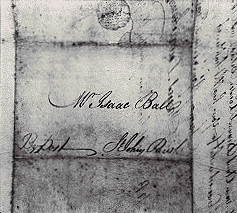
-
God
“Modern capitalization patterns for this word only became well established during the 18th century” (OED).
-
housemaids
“Originally: a female domestic servant, esp. one in charge of the reception rooms and bedrooms. Now more generally: a woman who is employed to perform various domestic tasks, esp. cleaning, in a person's home, a hotel, etc” (OED).
-
the Bath paper, and look over the arrivals
"1755 - Oct 18 : Bath Advertiser, Bath's second newspaper, founded to include 'Lists of the Nobility and Gentry resorting to the BATH'" (British Library).

-
-
annotatingausten.sfsuenglishdh.net annotatingausten.sfsuenglishdh.net
-
road–books
"A book of maps showing the roads of a district or country, often having additional information of interest to travellers or motorists; (also formerly) a book describing particular roads or routes" (OED).
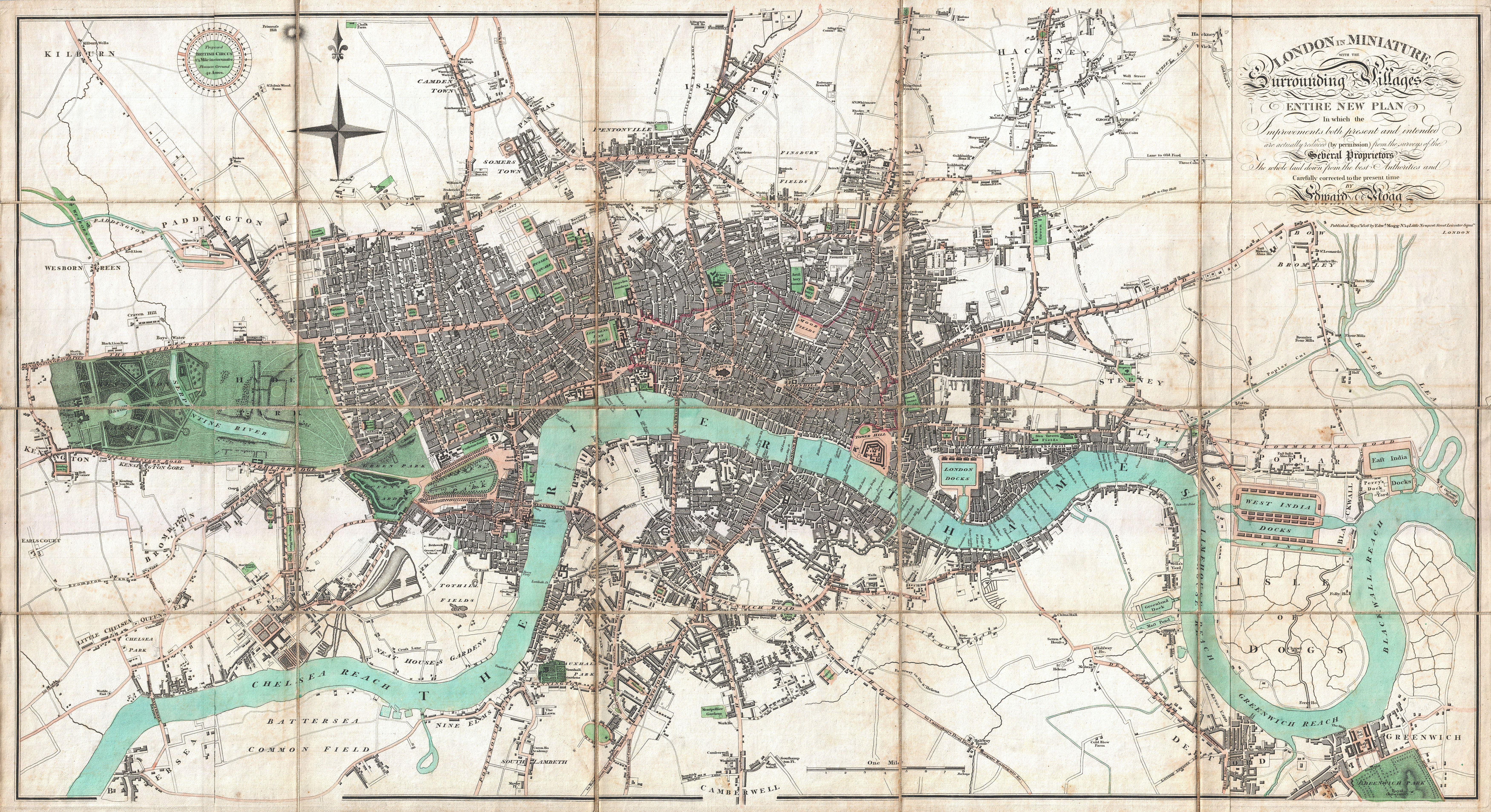
-
-
annotatingausten.sfsuenglishdh.net annotatingausten.sfsuenglishdh.net
-
parsonage
"The church house provided for a rector. Also (in later use): the house of any benefice member of the clergy of the Church of England; the residence of any minister of religion" (OED).

-
pleasure–ground
"A piece of land set aside for recreation and enjoyment, esp. one ornamented and laid out for this purpose" (OED). These were generally in the form of a garden attached to an estate, as below.

-
Mechlin
A type of lace, so called because it was primarily produced in Mechelen, Belgium. It was also produced in Antwerp and Brussels. It was very popular throughout the 18th century, but the "disappearance of lace ruffles before 1780 from women's sleeves, and the disappearance of the cravat and men's ruffles" seriously reduced its place in fashionable dress (http://belovedlinens.net/lace/Mechlin.html ).

-
hack post–chaise
An extension of the phrase a hackney horse, a "horse let out for hire; depreciatively, a sorry or worn out horse; a jade" (OED). 'Post-chaise' refers to a "horse-drawn, usually four-wheeled carriage (in Britain usually having a closed body, the driver or postilion riding on one of the horses) used for carrying mail and passengers, esp. in the 18th and early 19th centuries" (OED). Therefore, 'hack post-chaise' means that the entirety of the post-chaise was hired and not owned.
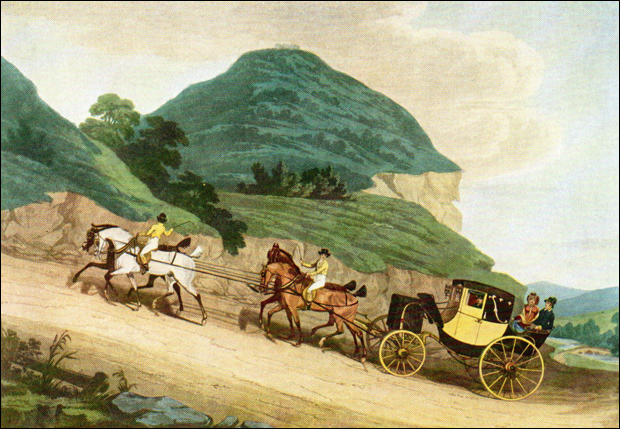
-
- Apr 2016
-
www.stillorganchamber.ie www.stillorganchamber.ie
-
Access the collection, Ordnance Survey Ireland (OSi) 19th Century Historical Maps, at https://digital.ucd.ie/view/ucdlib:40377
-
-
digital.ucd.ie digital.ucd.ie
-
See "View large scale 19th century Irish town and city maps," at RootsIreland.ie 2016-03-09.
-
- Dec 2015
-
cityheiress.sfsuenglishdh.net cityheiress.sfsuenglishdh.netACT V1
-
To bless the King, and Royal Albany
The king, and "Royal Albany" Behn references is James II of England, whose title was Duke of Albany, among many others. He was the last Roman Catholic monarch to rule over the kingdoms of England, Ireland, and Scotland. He reigned from 1685 to 1688, when he was overthrown by the Glorious Revolution.

Tags
Annotators
URL
-
-
cityheiress.sfsuenglishdh.net cityheiress.sfsuenglishdh.netACT IV4
-
Oyster−Woman
A woman who gathers, cultivates and/or sells oysters.
Oyster-women were associated with bawds, whores, and beggar women that took part in a 1637 riot in a church that made so much noise that it drowned out the service. They were described by a royalist newspaper as a carnivalesque mob.
-
Jointure or a Vow in publick
This phrase refers to the practice of announcing one's intention to marry in the presence of church witnesses. These vows were considered to be binding, despite the couple not yet being joined in holy matrimony.
-
Tom Bell
Thomas Bell (fl. 1573–1610) was an English Roman Catholic priest, who later denounced the faith and became an anti-Catholic writer and persecutor.
-
Domestick Intelligence
“Domestick Intelligence” refers to “Domestick Intelligence: Or News both from CIty and Country” an early local newspaper developed by Anti- Catholic, Pro-Whig publisher Benjamin Harris. In the context of this text, one in possesion of the “Domestick Intelligence” would have negative connotations placed upon him. (Wikipedia Online)
-
-
cityheiress.sfsuenglishdh.net cityheiress.sfsuenglishdh.netACT III6
-
SONG Ah, Jenny, gen your Eyes do kill, You’ll let me tell my Pain; Gued Faith, I lov’d against my Will, But wad not break my Chain. I ence was call’d a bonny Lad, Till that fair Face of yours Betray’d the Freedom ence I had, And ad my bleether howers. But noo ways me like Winter looks, My gloomy showering Eyne, And on the Banks of shaded Brooks I pass my wearied time. I call the Stream that gleedeth on, To witness if it see, On all the flowry Brink along, A Swain so true as Iee.
This two verse song by Aphra Behn would have been considered a "Scotch Jig". It was set to the tune of "Ah, Jenny Gin" (Ebsworth).
Sheet music published between 1719-20.
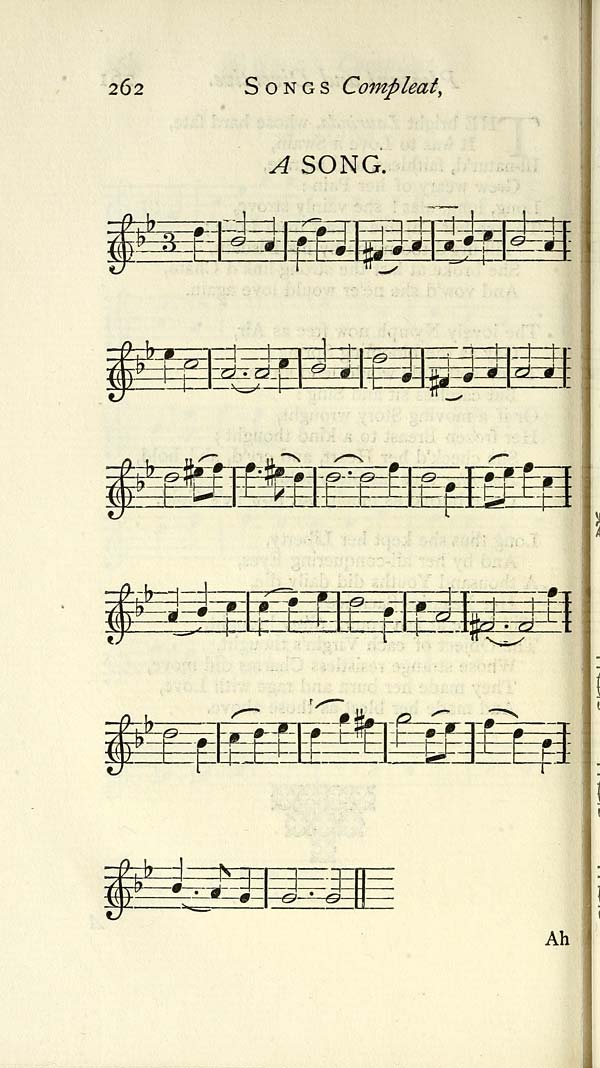
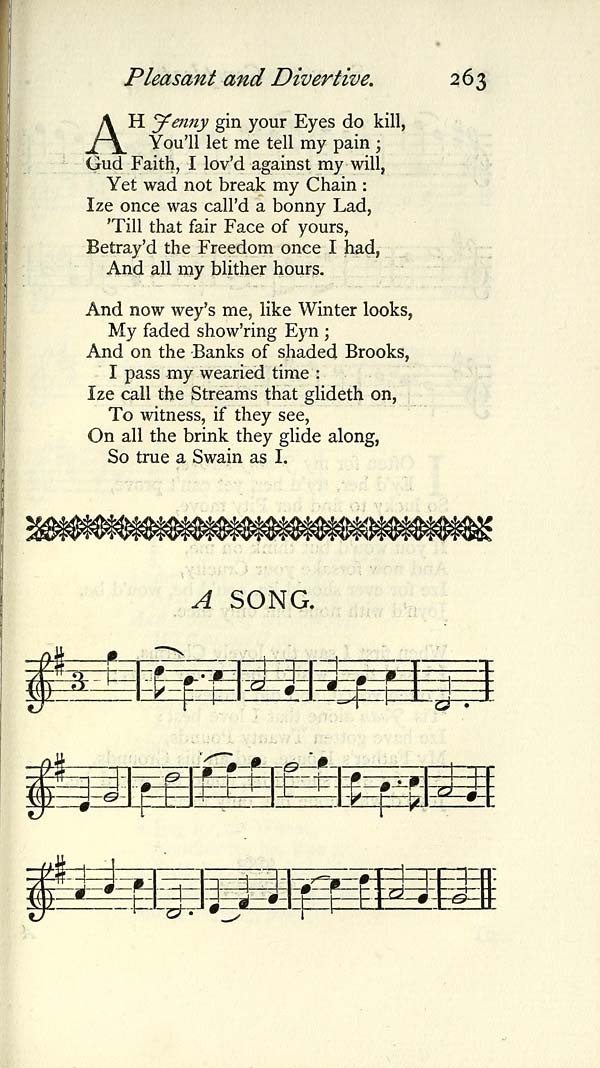
-
we live in a cold Climate

This is a reference to the Little Ice Age, a time period roughly "between 1300 and 1870" when the winter climate of Europe and North America was significantly colder than that of the 20th century. (Environmental History Resources).
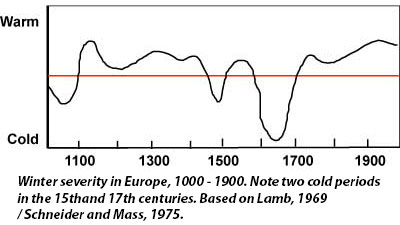
-
Royal Duke of Albany
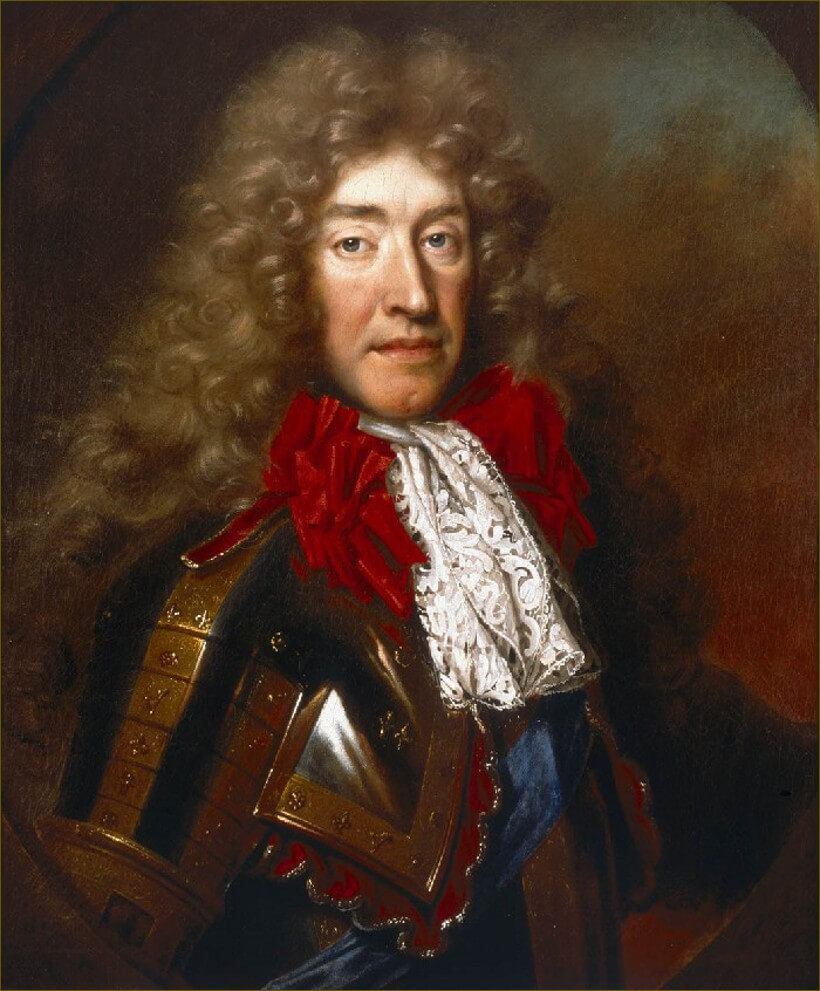
James II was Duke of York from 1644 and Duke of Albany from 1660 to his reign King of England in 1685. James II reigned until his death in 1688. He was the second surviving son of executed Charles I and Henrietta Maria of France. He was married to Anne Hyde from 1660 until her death in 1671. He remarried Mary of Modena in 1673 until his death. The Exclusion Crisis (1679-1681) attempted to exclude James II and Charles II, his brother, from the throne of England, Scotland, and Ireland because they were Roman Catholic, but the bill did not pass. He was the last Roman Catholic monarch to rule England, Scotland, and
-
French Hugonots
 Portrait of John Calvin by Hans Holbein the Younger
Portrait of John Calvin by Hans Holbein the YoungerThe correct spelling of the word is Huguenots. Huguenots were French Protestants and members of the Calvinist communion of France in the 16th and 17th century (OED).
-
Cavalier
A term for a 17th century Royalist; “a name given to those who fought on the side of Charles I in the war between him and the Parliament” (OED).
-
King of Poland
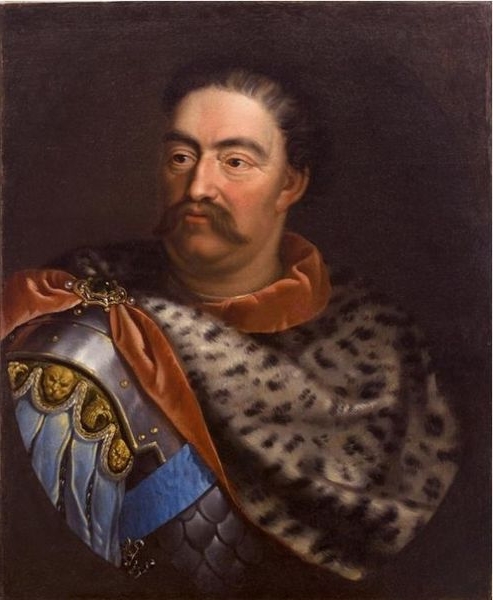
John III Sobieski was King of Poland and Grand Duke of Lithuania from 1684 until his death in 1696. He married Marie Casimire Louise. He was named the “hero king” in Poland after deafeating the Ottomans.
-
-
cityheiress.sfsuenglishdh.net cityheiress.sfsuenglishdh.netACT II7
-
Spanish Paint
Cosmetics coming from or used in Spain. (OED)
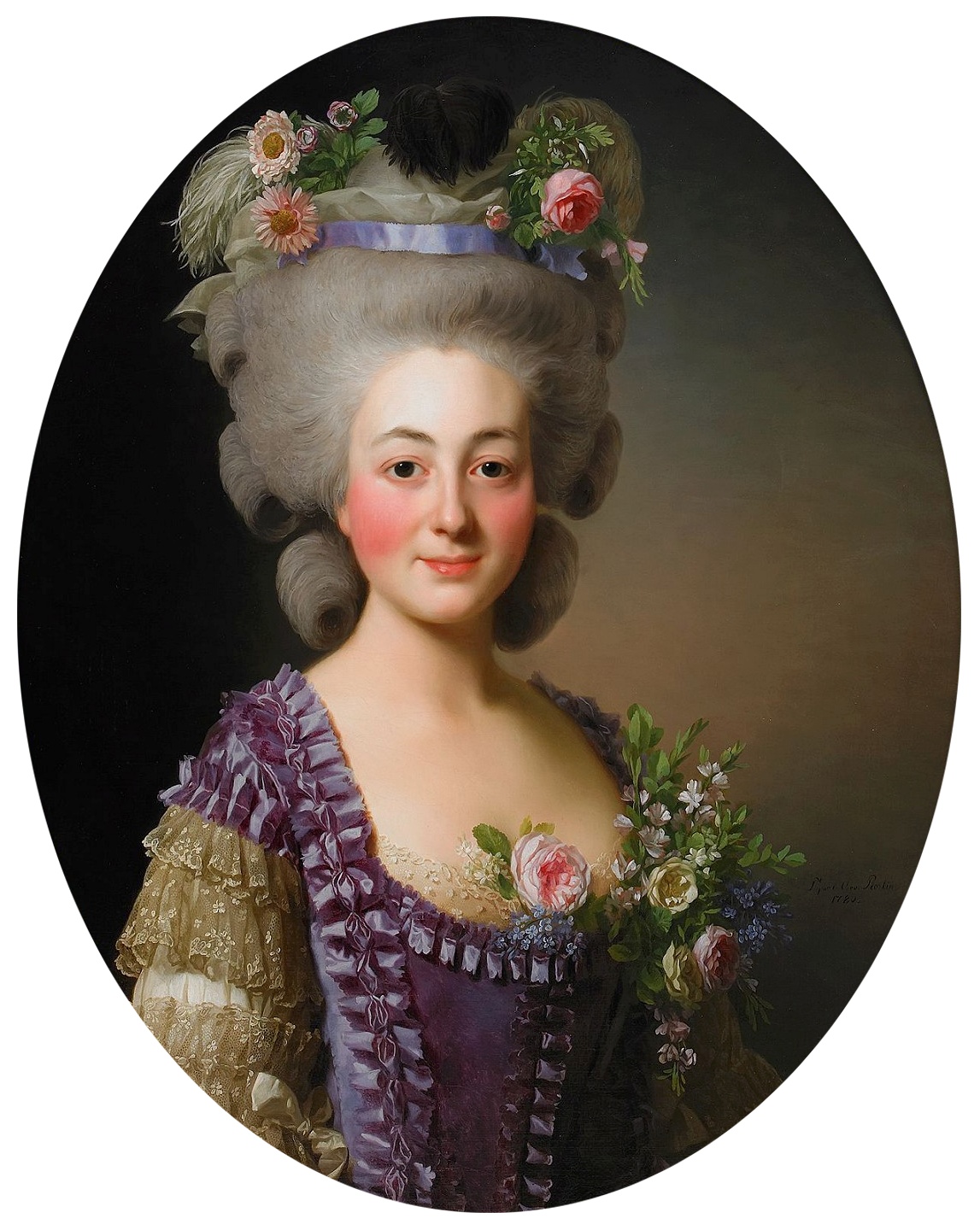
-
Tommy
(A generic name for) a British private soldier; British private soldiers collectively. (OED)

-
Coxcomb
A fool or simpleton; a foolish, conceited, showy person, vain of his accomplishments, appearance, or dress; a fop (OED).
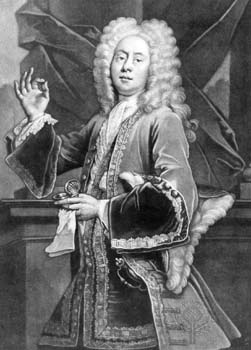
-
Bugbear
A sort of hobgoblin (presumably in the shape of a bear) supposed to devour naughty children; hence, generally, any imaginary being invoked by nurses to frighten children; an object of dread. (OED)
-
Conventicle
A meeting secular or religious. (OED)

-
Liveries
The distinctive dress or uniform provided for and worn by an official, retainer, or employee. (OED)

-
Sir Nicholas Gett−all
A character possibly crafted around a person at the time but no definitive information was found to support this.
-